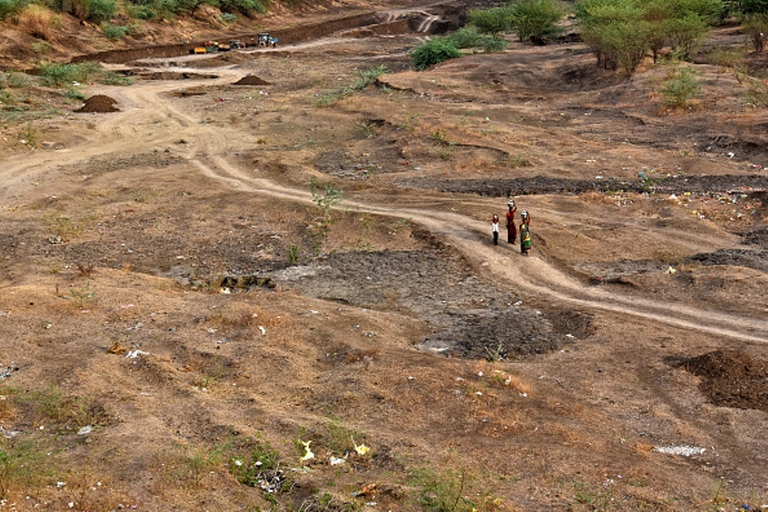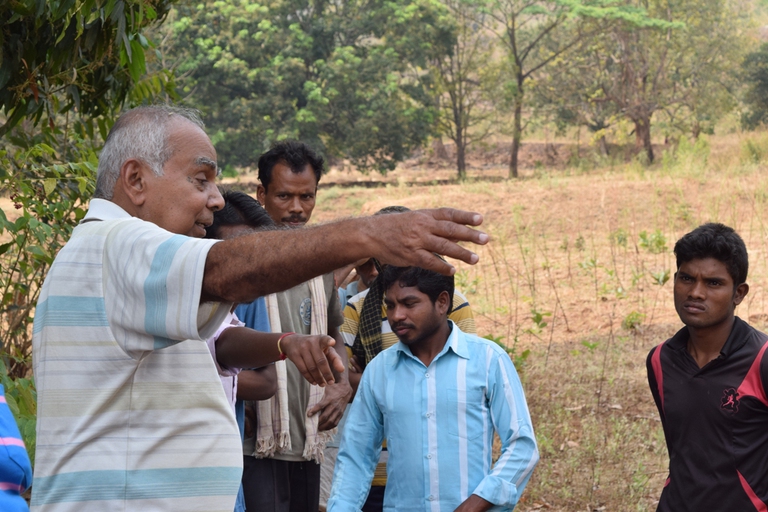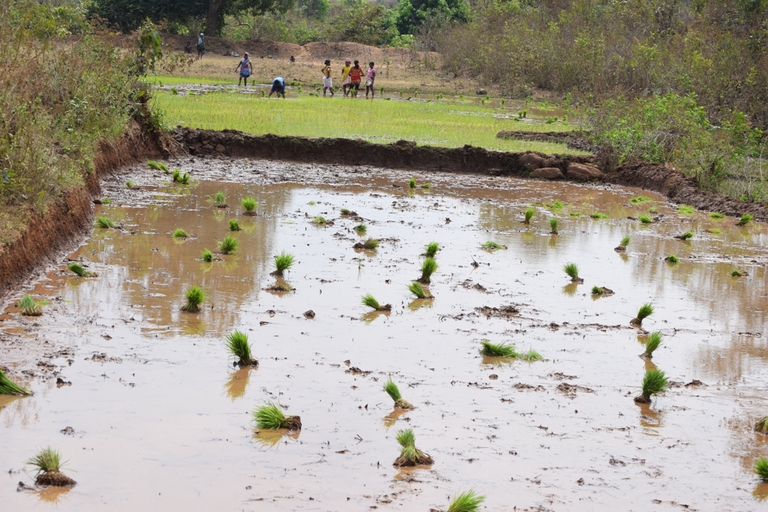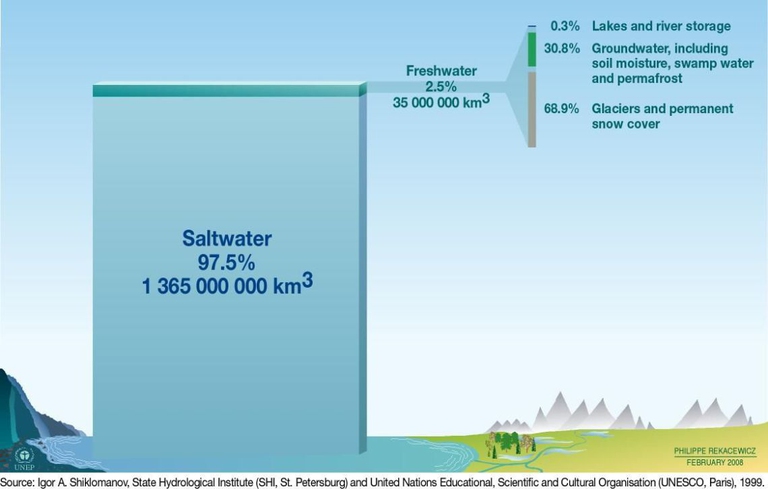
After a landslide led to twelve deaths on the island of Ischia, questions have been raised about the impacts of illegal building, tourism, and climate change.
Indigenous communities in India’s Rayagada district mitigate the challenges of water scarcity by storing rainwater in subsurface soil. A cheap and concrete solution to a global problem.
With a population of over 1.2 billion people, India’s per capita water availability has decreased substantially over the years. From 5,200 cubic metres (m3) in 1951 to 1,588 m3 in 2010 according to the Water Resources Information System (WRIS). This may shrink further to 1,401 m3 and 1,191 m3 by 2025 and 2050 respectively. To note is that the average volume isn’t available everywhere because of temporal and spatial variations in rainfall.
With deficient rain years becoming frequent and water demand rising non-renewable aquifers are being overexploited and states are engaged in disputes over river water sharing. Crop loss due to water scarcity has become a regular occurrence. The general decline in the conditions of agriculture is one of the reasons behind the over 300,000 farmers suicides that have taken place between 1995 and 2015 as National Crime Record Bureau data shows.
Nearly 30 per cent of India’s extension is threatened of desertification reveals the Desertification and Land Degradation Atlas of India. To face these challenges the Indian government has planned a 165 billion dollar river linking project to connect about 37 rivers with 15,000 kilometres of artificial waterways to relocate 174 cubic kilometres (km3) of water, reports The Economist.
“The success and impact of this project on basin ecosystems are still in doubt. India can instead go for simpler solutions like conservation of rainwater before it runs off to rivers and the sea,” says Banamali Naik, an agriculture engineer and irrigation expert who works on conservation of rainwater in subsurface soil. India, in fact, receives annual precipitations of the volume of 4,000 km3 of which only 1,123 km3 is utilisable. 1,869 km3 of water flows through rivers whilst most of the rest for evaporates according to WRIS data.
Instead, “for most of the rainwater to be stored in the soil subsurface you don’t need sophisticated technology nor do you need to tamper with the geography. Its the runoff time that needs to be extended,” explains Bimal Chandra Sahu, an agriculture engineer in Naik’s team, “the speed of water in the soil is about two inches per hour but over a mile on the surface”. “To increase the runoff time, straight down flow of rainwater has to be checked and managed to move in a lengthier serpentine path within the landscape”.
“We created small earthen bunding [a containment wall] down the hill to check the rainwater and defined its flow path so that it takes hours of time to run off the landscape after filling all our fields,” says Phulka Khanjak of Sikapai village in Odisha state’s Rayagada district. Now as the water flows for longer, over 60 per cent of rainwater gets absorbed into the soil, claims Sahu.
The villagers explain the impact this has had on their agricultural activities: “It’s been a year since we did this. Our fields used to remain fallow between rainy seasons but are now producing vegetables during winter and summer,” says Para Khanjaka of Sikapai. “We never thought of growing anything in this arid region after the rainy season. But it’s early summer and I’m now growing tomato and vegetables,” says Majibani Praska of Chichimi village, “some even cultivate rice now”. Another woman farmer, Almati Praska, says “production has also increased by 50-100 per cent”.
This is because rainwater stored in deep soil evaporates during dry seasons and adds moisture to the soil subsurface to support plant life. It keeps the groundwater streams alive too, Naik explains. “The idea has been implemented in the Keonjhar and Rayagada districts of Odisha and parts of Madhya Pradesh. It’s a cheap solution costing 150 dollars per hectare only,” he says.
On the entire planet less than one percent of freshwater is available for human consumption, the Water Scarcity Factsheet shows. Meanwhile, climate change has taken on global dimensions and affects water quality in various ways says UN-Water. “By 2025, two-thirds of the world’s population may face water shortages. And ecosystems around the world will suffer even more,” cautions the World Wildlife Fund.
At such a crucial moment, the intuition of conserving rainwater in subsurface soil bears enormous hope for humanity and the world to escape the dangers of water scarcity.
Siamo anche su WhatsApp. Segui il canale ufficiale LifeGate per restare aggiornata, aggiornato sulle ultime notizie e sulle nostre attività.
![]()
Quest'opera è distribuita con Licenza Creative Commons Attribuzione - Non commerciale - Non opere derivate 4.0 Internazionale.
After a landslide led to twelve deaths on the island of Ischia, questions have been raised about the impacts of illegal building, tourism, and climate change.
Not much snow, peaks of 19 degrees Celsius in Norway and even 28 degrees in France: official data confirms the anomalously high temperatures of this past winter.
Ocean warming has risen to record highs over the last five years: just in 2019 the heat released into the world’s oceans was equivalent to that of 5-6 atomic bombs per second. The culprit, no doubt, is climate change.
What did Greta Thunberg tell participants at the 2020 World Economic Forum in Davos? Once again, the Swedish activist underlined the total lack of concrete solutions to the climate crisis presented by leaders so far.
The list of human and animal victims of the Australia wildfires keeps growing – one species might already have gone extinct – as the smoke even reaches South America.
Kivalina is located on a small island once guarded by sea ice, which is now melting due to global warming. While the sea threatens to wipe the village off the face of the Earth, its inhabitants refuse to give up their lives and traditions.
Thanks to activists, the voice of the world’s peoples resounded through the COP25 like an alarm bell. Governments didn’t reach the results they demanded, but their cries and messages were stronger than ever, reaching even those who weren’t in Madrid.
Climate change poses a risk for millions. However, women are the most vulnerable to its negative consequences: a few simple considerations by the Italian Climate Network help us perceive the global implications of this.
The COP25 ended two days late and with very few steps ahead made. Climate negotiations in 2020 will be an uphill battle as political will clearly seems to be lacking, once again.











